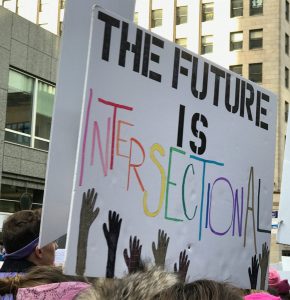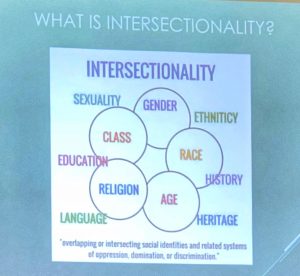By Samantha Anthony
 I have always been fascinated by individuality. Who am I? What do I like? Simple questions like these can be difficult for young women like myself to answer, since many of us are still navigating our own personality. Discovering your passions and determining how to present yourself is no simple task. There are many aspects of one’s identity: hobbies, friendships and relationships, careers, appearance and style. I’ve always been aware of this, but finding out who you are isn’t a destination – it’s more of a journey.
I have always been fascinated by individuality. Who am I? What do I like? Simple questions like these can be difficult for young women like myself to answer, since many of us are still navigating our own personality. Discovering your passions and determining how to present yourself is no simple task. There are many aspects of one’s identity: hobbies, friendships and relationships, careers, appearance and style. I’ve always been aware of this, but finding out who you are isn’t a destination – it’s more of a journey.
Before coming to UMKC, I had never heard the term “intersectionality.” This word is used at conventions and workshops to help people embrace every facet of their identity: sexuality, race, religion, gender, and personal experiences are all combined to form you. Although I could immediately grasp this much, I found myself wondering about the term and its significance, especially in marginalized communities.
I learned that a law professor named Kimberlé Crenshaw first coined the term “intersectionality” back in 1989, but it was not popularized until almost twenty years later, when many black women found themselves struggling to relate to the mainstream (and primarily white) feminist movement. The Oxford Dictionary defines intersectionality as “The interconnected nature of social categorizations such as race, class, and gender, regarded as creating overlapping and independent systems of discrimination and disadvantage; a theoretical approach based on such a premise.” If that seems confusing, think about it like this: even though you may share a small portion of your identity with someone else, like gender or religion, you don’t share all of the same traits. For example, a white man who identifies as gay has experienced different forms of oppression than a black man who is gay, or a white woman who is a lesbian. Even though all of these people belong to the LGBTQ+ community, they most likely do not share all of the same beliefs. According to YW Boston, which published an article exploring the concept of intersectionality in 2017, “Understanding intersectionality is essential to combatting the interwoven prejudices people face in their daily lives.”
though all of these people belong to the LGBTQ+ community, they most likely do not share all of the same beliefs. According to YW Boston, which published an article exploring the concept of intersectionality in 2017, “Understanding intersectionality is essential to combatting the interwoven prejudices people face in their daily lives.”
Intersectionality may just be a term, but it should be used to help further awareness of privilege and disadvantage (including your own). YW Boston recommends avoiding language that blankets large groups of people: instead of saying “all women feel that _______,” try to avoid assumptions and focus on individual beliefs and experiences. The best way to encourage intersectionality, however, is to put yourself in someone else’s shoes and try to see things from their point of view. How might their experiences have shaped their beliefs and values? By starting here, we can certainly find some common ground.